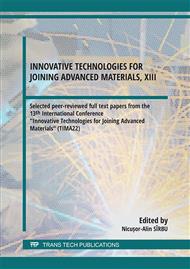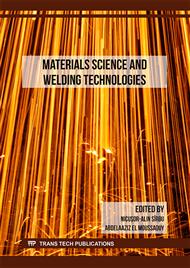[1]
Z. Gârban, Quo vadis food xenobiochemistry, Ed. Eurobit, Timisoara (2015)
Google Scholar
[2]
V. Nagy, The integration of hygienic design principles in the optimization process of the technological system for the valorization of membranes of animal origin, PhD Thesis, Politehnica University Timisoara, (2022)
Google Scholar
[3]
V.K. Chattu, Food safety as an integral part of Food Security: Addressing the governance issues and the critical role of climate change, International Journal of Advanced Research, Journal homepage: http://www.journalijar.com, (2016)
Google Scholar
[4]
Information on European Commission, https://ec.europa.eu/info/departments/health-and-food-safety_en#contact
Google Scholar
[5]
H.L.M. Lelieveld, M.A. Mostert, J. Holah and B. White, Hygiene in food processing, Woodhead Publishing Limited and CRC Press LLC 2003, pp.61-69
Google Scholar
[6]
Information on https://www.upkeep.com/learning/food-manufacturing-maintenance
Google Scholar
[7]
F. Moerman, Personal Hygiene and Good Maintenance Practices for the Servicing of Food Processing Equipment, Food Protection and Security: Preventing and Mitigating Contamination during Food Processing and Production, Elsevier Ltd., 2017, pp.287-325
DOI: 10.1016/b978-1-78242-251-8.00008-4
Google Scholar
[8]
Information on Darimex International, https://www.darimex.com/
Google Scholar
[9]
Information on EHEDG, Guidelines 8, 9, 35, https://www.ehedg.org/guidelines-working-groups/guidelines/guidelines
Google Scholar
[10]
V. Nagy, G.V. Mnerie, V.I. Safta, D. Mnerie, Critical analysis of some practices of joining stainless steel pipes used in the food industry from the perspective of hygienic welding principles, Defect and Diffusion Forum, Vol. 416, pp.145-150, ISSN: 1662-9507, 2022 Trans Tech Publications Ltd, Switzerland, (Online: 2022-05-27)
DOI: 10.4028/p-239924
Google Scholar
[11]
F.W. Strassburg, H. Wehner, (2007), Welding of stainless steels, Ed. SUDURA Timisoara – 2007, pp.196-204
Google Scholar
[12]
Information on http://www.isim.ro/isim_ro.htm
Google Scholar
[13]
V.I. Safta, G.V. Mnerie, V. Nagy, D. Mnerie, (2022), Some helpful features of the TIG welding process using high frequency Pulsed Arc, Defect and Diffusion Forum, Vol. 416, pp.79-86, ISSN: 1662-9507, 2022 Trans Tech Publications Ltd, Switzerland, (Online: 2022-05-27).
DOI: 10.4028/p-9rvfjw
Google Scholar



